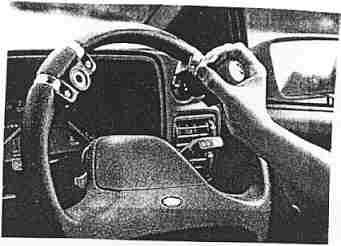NEW SEARCH NEW SEARCH, STATE - ACT
First Prev
DISCLAIMER:
Whilst all care is taken to provide accurate information with respect to the item described, the Independent Living Centre (ILC) is not involved in product design or manufacture, and therefore not in a position to guarantee the accuracy of the information provided. Selection of equipment, which is both suitable and appropriate for individual needs remains the responsibility of the person(s) considering requisition, and no responsibility is taken by the ILC for any loss or injury caused through use of the equipment or alleged to have arisen through reliance upon information provided. As information is subject to change any enquiries should be directed to the manufacturer.
Item Details
A Buyers Guide - Spinner Knobs
ILC Reference NO 51:11:600
Item sourced from ILC ACT database

Short Description
This information sheet is designed to familiarise clients with the design
features of spinner knobs, and in particular those features that need to be
taken into consideration when purchasing a spinner knob. Consideration should be given to the shape and size, attachment method, positioning, and licensing regulations for the attachment of a spinner knob to a motor vehicle.
More Details
POINTS TO CONSIDER WHEN PURCHASING A SPINNER KNOB:
. The shape and size of the spinner knob.
. The positioning of the spinner knob on the steering wheel. For those using the right hand/arm to steer, the suggested attachment point is at 2 o'clock, for the left hand at 10 o'clock, as these provide the most leverage when turning the wheel.
. The type of attachment necessary to fit the spinner knob to the steering wheel.
. The ease of fitting and removing the spinner knob from the steering wheel.
. The suitability of the spinner knob for gripping.
. The length and conditions of guarantees.
SOME OF THE TYPES OF SPINNER KNOBS AVAILABLE:
. Conventional spinner knob - these are useful for drivers who have full use of only one steering hand and arm.
. C-Spinner knob - used by quadriplegics who have a functional wrist and slightly functional grip.
. Quad fork spinner (or tuning fork spinner) - used by quadriplegics with at least partial functional use of their wrists and some use of the extensor muscles of the hand. The hand is inserted into the opening at the top of the device and is held in a vertical position.
. Tri-pin spinner - used by people with quadriplegia who have tensor hand muscle function. The hand and wrist are stabilised and the device resists efforts of the hand to pull out of the device. The hand is still free to lift up and out of the device.
LICENSING REGULATIONS:
. Spinner knobs must be detachable (quick release) for drivers of the vehicle who do not have a disability (eg. during service of the vehicle).
. The Roads Transport Authority (RTA) must be notified of this addition to the vehicle and the client must undertake an RTA driving test. The spinner knob will subsequently become an endorsement on the licence.
. These are general suggestions - if you experience considerable difficulty in performing activities of daily living, consult an occupational
therapist at a community health centre or aged care assessment team, or make an appointment with the ILC.
ADDITIONAL POINTS TO CONSIDER
. Spinner knobs enable a person who only has the use of one hand to be able to drive.
. There are a range of spinner knobs which are available to suit people with varying abilities.
. Spinner knobs assist people driving with hand controls.
. Spinner knobs can be used with either the right or left hand.
. Usually only very strong people are able to maintain full one handed control of a vehicle without power steering.
. When initially using a steering wheel spinner there is a tendency for people to oversteer, particularly if the steering is power assisted. Care should be taken when negotiating corners and turning.
. Spinner knobs vary in their attachment to a steering wheel, and certain types may not fit all wheel diameters, also the clamping device may, over time, damage the surface, that is cut into the covering.
Installation
All modifications which affect the driving controls must be approved by an Engineering Signatory. The engineering certificate must be produced if requested by an authorised officer such as a Police Officer or Vehicle Inspector.
Licence and Insurance Requirements
The ACT Road Transport Authority guidelines do not allow a person to drive using a modified driving control until they have passed a disability driving test. The test must be done in a modified vehicle with the required attachments. If a licence is granted, the licence must state all special conditions (if any) that are legally required to be used by the applicant, including any special fittings and modifications required in the vehicle to enable them to drive safely.
(For further information on ACT Road Transport Requirements, see the Driving and Licensing Regulations minor group in the Transport section).
Price Guide
Refer to supplier details for pricing.
Supplier Information - click to supplier for contacts details
GEMINI,
MITCHELL, ACT
GOUGH & GILMORE,
PARRAMATTA, NSW
PROBLEM MANAGEMENT ENGINEERING,
HORNSBY HEIGHTS, NSW
ROAD TRANSPORT AUTHORITY,
DICKSON, ACT
Additional /images
![]()

![]()
Click Thumbnail to view larger image.
First
Prev ![]()
![]() Next
Last
Next
Last
